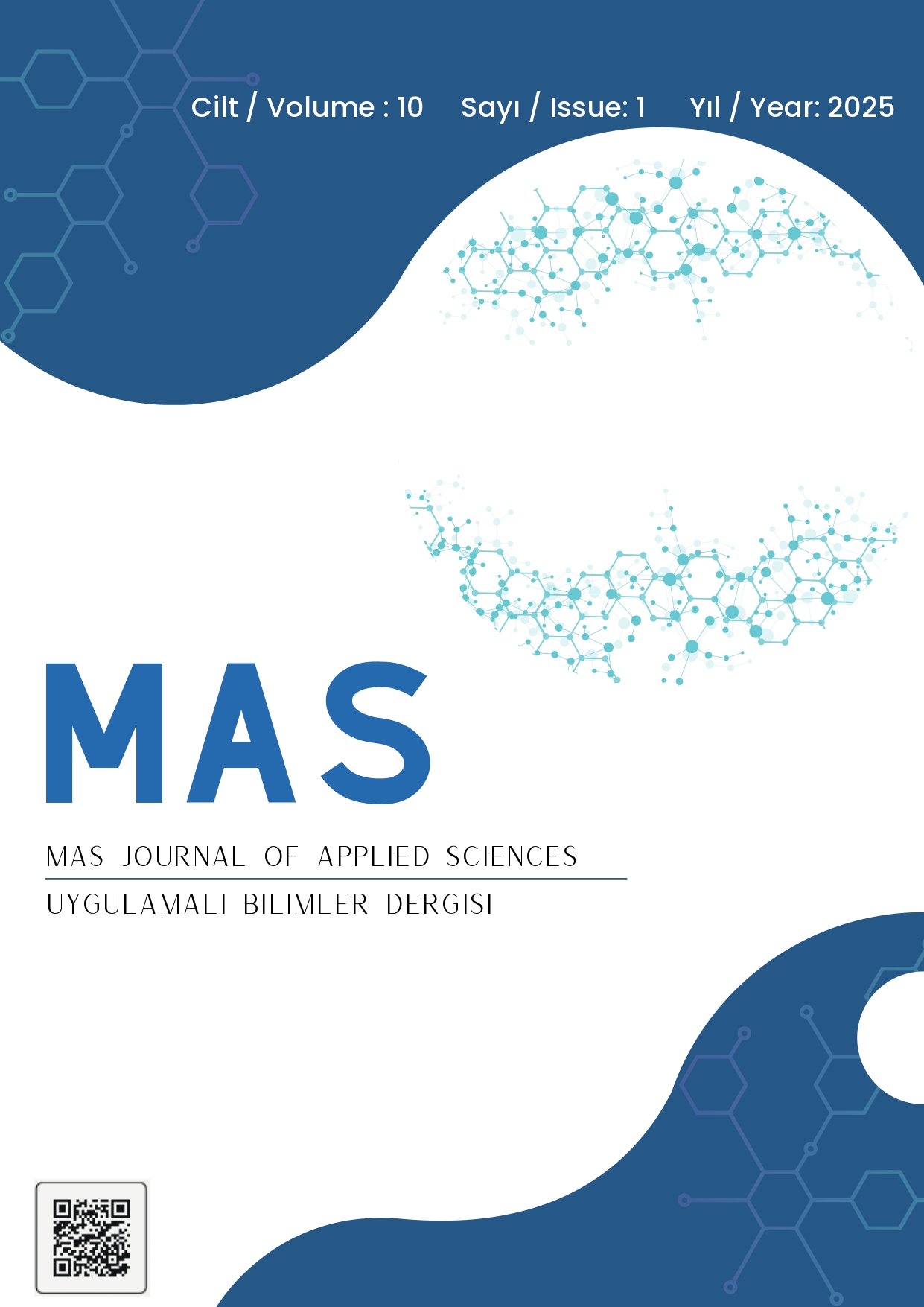Effect of Encapsulation on the Amount of HMF in Honey
DOI:
https://doi.org/10.5281/zenodo.15087581Keywords:
Honey, hydroxymethylfurfural, encapsulationAbstract
Hydroxymethylfurfural (HMF) is recognized as an undesirable component in honey and is usually formed as a result of heat treatment or prolonged storage of honey. HMF is formed as a result of chemical processes such as the Maillard reaction. Low levels of HMF are often associated with the freshness of honey. To prevent the formation of HMF in honey, it is thought that the application of the encapsulation process can increase the stability of this component and reduce its direct interaction. This method can help to extend the shelf life of honey and preserve its nutritional value. The protection provided by encapsulation may improve the overall quality of honey by reducing HMF formation depending on factors such as temperature and storage time. The aim of this study was to demonstrate that undesirable HMF formation can be prevented by encapsulating honey, which is rich in nutrients, with a biocompatible material. Accordingly, unencapsulated honey and encapsulated honey were kept in an oven at 80 °C for 2 hours and HMF formation was analyzed. In addition, the HMF content of unexposed honey, exposed honey and encapsulated honey samples were analyzed by high performance liquid chromatography (HPLC). As a result of the analysis, it was observed that the highest to the lowest amount of HMF was observed in honey exposed to temperature, encapsulated honey and honey samples not exposed to temperature, respectively. The calculated HMF amounts were 17.21 mg L-1, 14.80 mg L-1 and 14.70 mg L-1, respectively. Furthermore, these results were supported by thermal gravimetric analysis (TGA) and Fourier transform infrared spectroscopy (FTIR). In conclusion, this study showed that the encapsulation method was effective in reducing HMF formation. The findings suggest that encapsulation can increase the stability of honey and therefore may be an effective method to extend its shelf life.
References
Alamillo, R., Tucker, M., Chia, M., Pagán‐Torres, Y., Dumesic, J., 2012. The selective hydrogenation of biomass-derived 5-hydroxymethylfurfural using heterogeneous catalysts. Green Chemistry, 14(5): 1413.
Akkemik, E., İnal, B., Karakaş, D., Gök, M., Çalışır, Ü., Özdemir, O., Baycar, A., 2024. Siirt ve Şırnak illerinde hasat edilmiş bazı süzme balların kalite parametrelerinin belirlenmesi. Türkiye Teknoloji ve Uygulamalı Bilimler Dergisi, 5(2):54-69.
Bilici, F., 2025. Bal pazarlama süreçleri ve tanıtım stratejilerine yönelik öneriler. Uluslararası Akademik Yönetim Bilimleri Dergisi, 11(17): 16-45.
Çeliközlü, S., 2023. Biyoaktif bileşiklerin elektrospinning yöntemi i̇le nanoenkapsülasyonu (Ed: A.Yiğit). Nanotechnology and Organic Chemistry, Gaziantep, s.119-138.
Fang, X., Wang, Z., Yuan, B., Song, W., Li, S., Lin, W., 2018. Efficient conversion of cellulose to 5‐hydroxymethylfurfural in nahso4/zro2/h2o‐thf biphasic system. Chemistryselect, 3(43): 12243-12249.
Gündoğdu, S., Uçar, Ü., Uz, A., 2021. Resveratrolün bulunduğu kaynaklar ve tibbi̇ önemi̇. Ankara Üniversitesi Eczacılık Fakültesi Dergisi, 45(3): 652-673.
Gündüz, B., Akay, K., Karakuş, M., Akalan, M., Yücetepe, M., Karaaslan, A., Başyiğit, B., Yılmaz, F., Karaaslan, M., 2023. Siirt-Pervari yöresinden toplanan balların fizikokimyasal özelliklerinin belirlenmesi. Harran Tarım ve Gıda Bilimleri Dergisi, 27(3): 405-414.
Lee, B.B., Ravindra, P., Chan, E.S., 2013. Size and shape of calcium alginate beads produced by extrusion dripping, Chemical Engineering Technology, 36(10): 1627-1642.
Jaya, F., Radiati, L., Jamilah, J., 2016. The effect of honey harvesting age in the area of calliandra plant to diastase enzyme activity, hidroximetilfurfural (hmf) and acidity. Journal Ilmu Dan Teknologi Hasil Ternak, 11(2): 60-63.
Jeuring, J., Kuppers, F., 1980. High Performance Liquid Chromatography of Furfural and Hydroxymethylfurfural in Spirits and Honey. Journal - Association of Official Analytical Chemists, 63(6): 1215.
Onür, İ., Misra, N.N., Barba, F.J., Putnik, P., Lorenzo, J.M., Gökmen, V., Alpas, H., 2018. Effects of ultrasound and high pressure on physicochemical properties and HMF formation in Turkish honey types. Journal of Food Engineering, 219: 129-136.
Okutan, G., Boran, G., 2023. Emulsion and encapsulation applications in fish oil. Yüzüncü Yıl Üniversitesi Fen Bilimleri Enstitüsü Dergisi, 28(1): 334-344.
Özdemir, N., 2023. Balda çoklu antibiyotik kalıntılarının LC-MS/MS ile hızlı doğrulama analizi. Kocatepe Veterinary Journal, 16(4): 464-471.
Qu, D., He, S., Chen, L., Ye, Y., Ge, Q., Cong, H., Ha, Y., 2022. Paired electrocatalysis in 5-hydroxymethylfurfural valorization. Frontiers in Chemistry, 10.
Saikia, K., Rathankumar, A., Kumar, P., Varjani, S., Nizar, M., Lenin, R., Vaidyanathan, V., 2021. Recent advances in biotransformation of 5‐hydroxymethylfurfural: challenges and future aspects. Journal of Chemical Technology & Biotechnology, 97(2): 409-419.
Torun, A., Bekar, M., 2024. The relationship between high school female students' health perceptions and their knowledge levels on protection from gynecological cancers: descriptive research. Türkiye Klinikleri Journal of Health Sciences, 9(1): 74-83.
Urgu, M., Saatli, T., Türk, A., Koca, N., 2017. Isıl i̇şlem görmüş i̇çme sütlerinde (pastörize, uht ve laktozsuz uht süt) hidroksimetilfurfural i̇çeriğinin belirlenmesi. Akademik Gıda, 249-255.
Ünübol Aypak, S., İnci, A., Bakırcı, S., Dereli Fidan, E., Soysal, M., 2019. Comparison of the antioxidant activity and hydroxymethylfurfural (HMF) levels in honey taken from hives and markets, The Journal of Food, 44(1): 86-92.
Yurt, B., 2020. Iğdır ve yöresinde üretilen balların bazı fizikokimyasal özelliklerinin belirlenmesi. Türk Doğa ve Fen Dergisi, 9: 51-57.
Zappala, M., Fallico, B., Arena, E., Verzera, A., 2005. Methods for the determination of HMF in honey: A comparison. Food Control, 16(3): 273-277.
Downloads
Published
How to Cite
Issue
Section
License
Copyright (c) 2025 The copyright of the published article belongs to its author.

This work is licensed under a Creative Commons Attribution-NonCommercial 4.0 International License.


